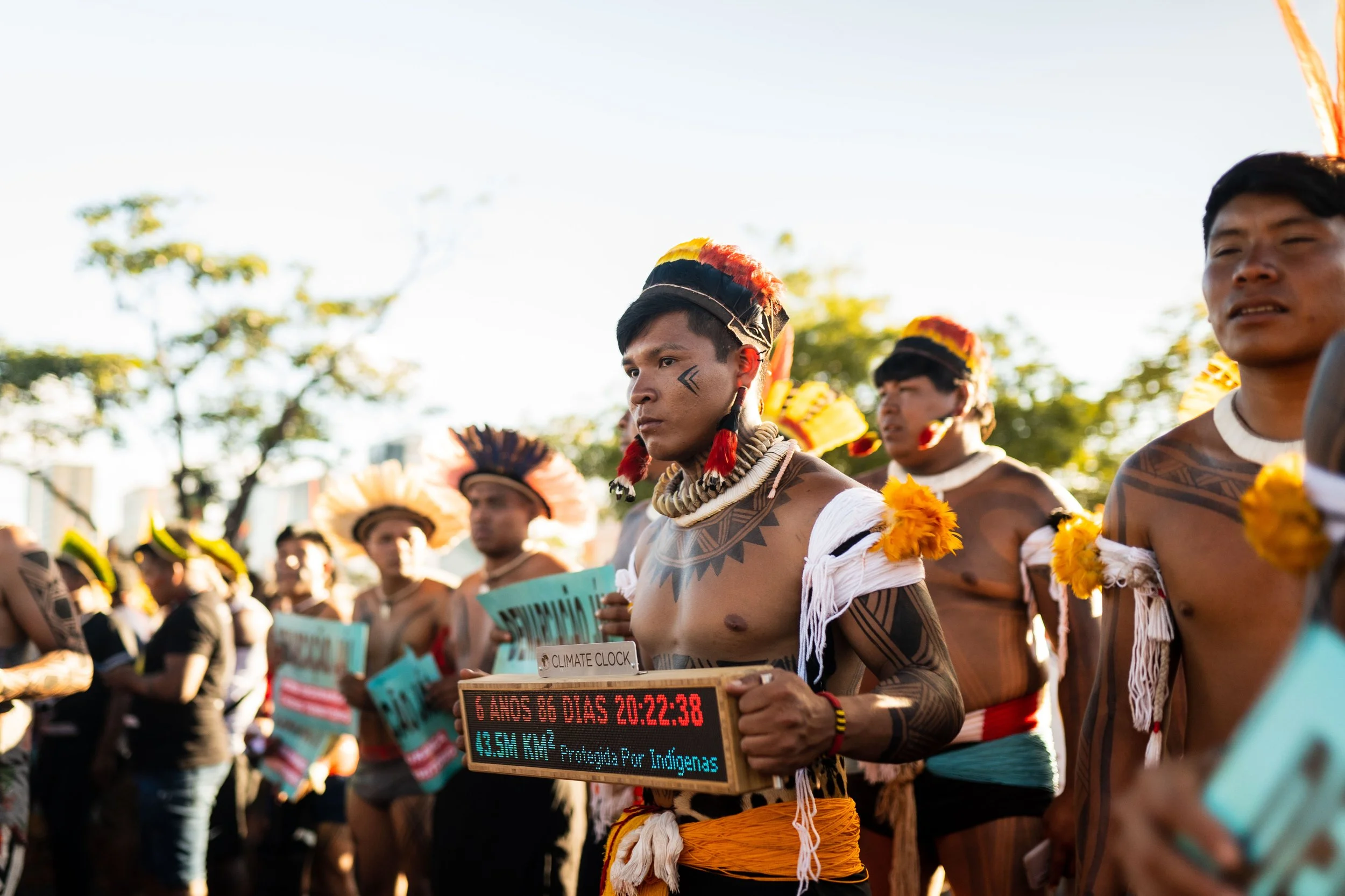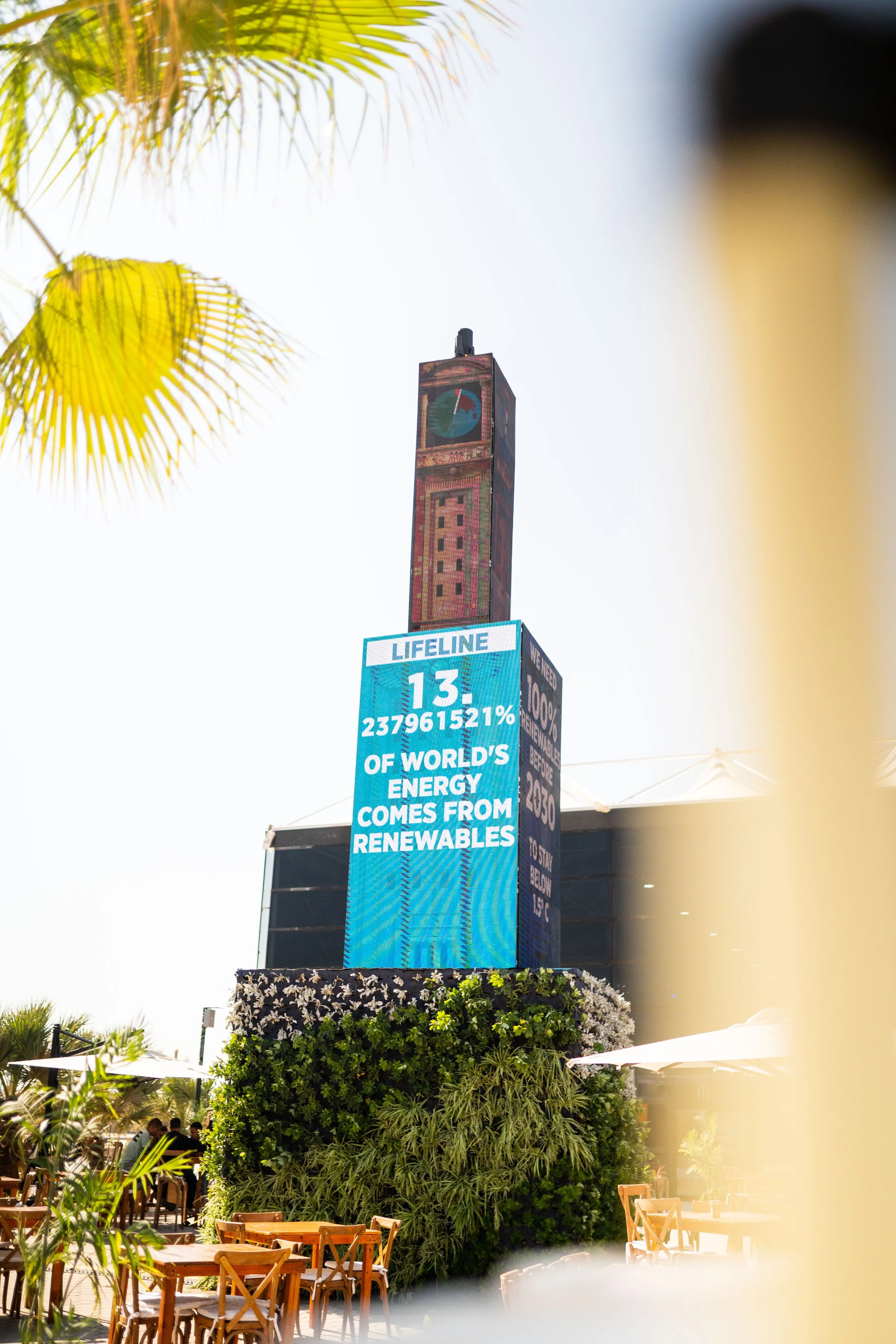
Our Lifeline
Tag line here
Many Solutions: Our lifelines
The clock’s lifelines highlight global solutions to the climate crisis and add more time to the clock. Use them to understand how you can help!
-
The Climate Clock’s Loss and Damage Lifeline tracks the climate debt (in $US) that wealthy, high-emitting G20 countries owe for the devastating impacts their excessive carbon emissions have caused to others, especially those in "developing" countries.
-
The Renewable Energy lifeline on the clock shows the percent of global energy coming from renewable sources – wind, water, solar, and bioenergy. It currently stands at 13.5% and is rising extremely slowly.
-
Indigenous communities are critical stewards of the planet’s natural carbon sequestration capacity, which must be protected in order to prevent the worst impacts of climate change.
-
The Green Climate Fund is a finance mechanism set up by the UNFCCC to support critical climate mitigation and adaptation projects in developing countries. At a current confirmed total of $9.52 billion pledged, the Green Climate Fund is woefully underfunded from the goal of $100 billion/year pledged by developed countries by 2020.
-
Currently (according to the IPU), the percentage of women represented in all national parliaments is 26.5%. Women's movements and climate movements the world over aim to raise that to 50%. The demand to achieve gender parity remains a key cross-cutting factor in all negotiations and agreements to combat the adverse effects of climate change.
-
Divestment from fossil fuels is crucial to combat climate change by bringing economic pressure on Big Oil & Gas and encouraging investors to align with a just transition to renewable energy.
-
The Climate Clock’s Loss and Damage Lifeline tracks the climate debt (in $US) that wealthy, high-emitting G20 countries owe for the devastating impacts their excessive carbon emissions have caused to others, especially those in "developing" countries.
-
The Renewable Energy lifeline on the clock shows the percent of global energy coming from renewable sources – wind, water, solar, and bioenergy. It currently stands at 13.5% and is rising extremely slowly.
-
Indigenous communities are critical stewards of the planet’s natural carbon sequestration capacity, which must be protected in order to prevent the worst impacts of climate change.
-
The Green Climate Fund is a finance mechanism set up by the UNFCCC to support critical climate mitigation and adaptation projects in developing countries. At a current confirmed total of $9.52 billion pledged, the Green Climate Fund is woefully underfunded from the goal of $100 billion/year pledged by developed countries by 2020.
-
Currently (according to the IPU), the percentage of women represented in all national parliaments is 26.5%. Women's movements and climate movements the world over aim to raise that to 50%. The demand to achieve gender parity remains a key cross-cutting factor in all negotiations and agreements to combat the adverse effects of climate change.
-
Divestment from fossil fuels is crucial to combat climate change by bringing economic pressure on Big Oil & Gas and encouraging investors to align with a just transition to renewable energy.










